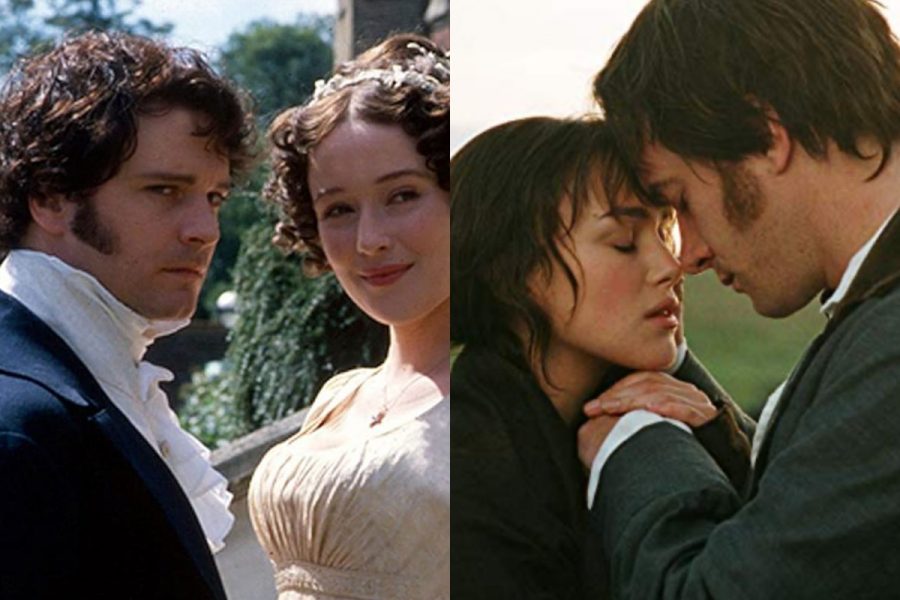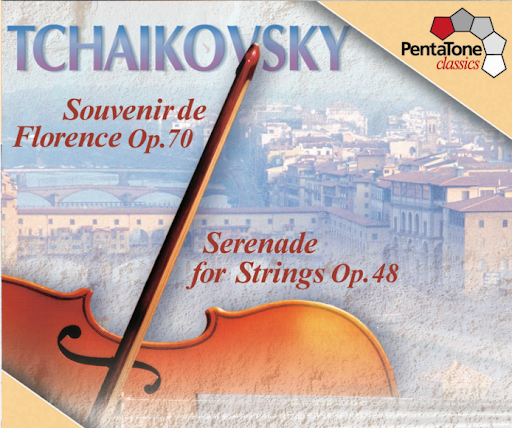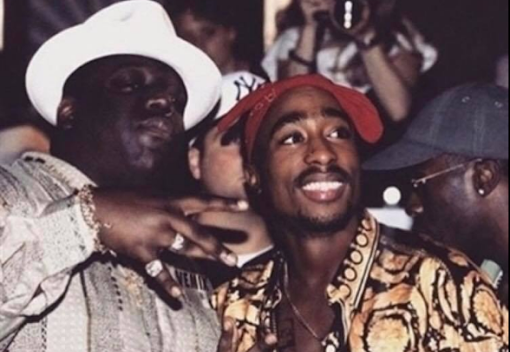Pride & Prejudice: 1995 or 2005?
~Spoilers for Pride and Prejudice (so go read the book!)~
As one of the most enduring romances of all time, it was inevitable that Pride and Prejudice would have a million adaptations. There are more than twenty different ways to experience the story – ranging from Bollywood to Broadway, webseries to zombie movies, and, of course, the classics. By the classics, we mean the 1995 BBC miniseries starring Jennifer Ehle and Colin Firth, and the 2005 movie starring Keira Knightley and Matthew Macfayden. We intend to settle the age-old debate: Which Pride and Prejudice adaptation is the best?
BBC Miniseries – Anya Marino
I shouldn’t even have to argue that the 1995 version is superior, but for the sake of convincing Lucy, I will. Full disclosure: I will admit that I do have a bias towards the 1995 version because I grew up watching it and only watched the 2005 version a little while ago. However, the 1995 version is much better because the costumes are more accurate, the actors truly embrace their part, and it still captures the emotions felt between the characters. (This fan-compilation of scenes of Darcy and Elizabeth captures a lot of their love story.)
Many people only enjoy the 2005 version more because it is shorter, therefore moving the story along faster, leaving absolutely no time to enjoy all the moments from the book. Upon watching the 1995 version after only seeing the 2005 version, Ms. Slocum reveals that she would enjoy the 1995 version more than 2005 if she had seen it first. Many people have told me that they haven’t even seen the 1995 version and claim that the 2005 is better because it has Keira Knightly (I have nothing against her, but have you seen Jennifer Ehle and Colin Firth together?!). Lucy says below that the 1995 version “fails to capture the excitement and romance of the book.” However, she watched the 2005 version first, the movie that skips or combines scenes for the sake of time. When you watch the longer (1995) version after watching the short (2005) version, of course, you’re gonna think that 2005 is better. When watching the 2005 movie before 1995, you gain a sense of how long you think it should be. Then, when watching the 1995 version later, you have little patience to see how this novel truly plays out and possibly give up before the show is over. However, if you watch the 1995 version first, you have a true sense of appreciation for Jane Austen. The 1995 version gives so much room for character development, which is truly needed for Mr. Darcy’s character. The later one does capture the excitement and romance, but there is no appreciation for Jane Austen’s writing. The 1995 version takes every chance to employ the emotions felt when reading the book. The 2005 one skips over the parts that may seem unimportant and combines the parts that seem similar.
I absolutely love the 1995 version because of the constant excitement it captures between Elizabeth Bennet and Mr. Darcy. Every scene engages the audience and brings them into the movie. The actors and actresses are perfectly cast and truly embrace their parts. Although most people don’t really like Mrs. Bennet (Alison Steadman) in the book (and have good reason not to!), she is perfectly cast. Her mood swings and drama transfer perfectly from the book. Julia Sawalha (Lydia Bennet) and Adrian Lukis (George Wickham) play their parts so well that you actually end up despising them for their actions. Throughout the whole movie, Mr. Darcy (Colin Firth) is frequently caught admiring Elizabeth Bennet (Jennifer Ehle), hinting at the audience of his undying love for her. These actors and actresses bring justice to the book, unlike other adaptations (*cough* 2005 *cough*).
In addition to the amazing cast, the historical details are correct (something that should be very important, especially to a fashion historian…). The book is placed in the regency era and the BBC miniseries employs this detail to their advantage. Their outfits are beautiful and further the class differences between the servants (working class), the Bennets (lower middle class), and the Bingleys, Mr. Darcy, and Lady Catherine de Bourgh (upper-middle class). I’m not super familiar with historical fashion, but I recognize the need for accuracy when creating a television show of one of the most amazing classics.
Those are just a few reasons why I love the 1995 version. The most important reason why the 2005 version will never be better is for the UNGODLY amount of pig and mud shots. They are not at all important and make me cringe. Those shots make the Bennets seem very poor, almost like they are living in dirt (which they aren’t!). They still have a good, steady income and keep servants (again, not poor). Also, the pig shots take away from the important story elements, especially when it comes to when Lydia runs away with Wickham. When they come to Longbourn (the Bennets’ house) as a married couple, many scenes are cut or smushed together and replaced with pigs (I mean, seriously?!). The pigs should’ve been totally left out of the adaptation. They portray the Bennet’s as poor, homely people. Their inaccurate outfits and lack of hairstyle (don’t even get me started on how especially nasty Mr. Wickham’s hair is!) only add to this sad injustice of Jane Austen’s careful character buildup.

Through portraying the Bennets’ house as poor, of course, they need awful outfits! Elizabeth Bennet (Keira Knightly) is portrayed as a homespun princess, completely ruining Jane Austen’s characterization of her. Mrs. Bennet’s (Brenda Blethyn) outfits make her look like a working-class woman, not one who frivolously spends money whenever she pleases. Mr. and Mrs. Bennet are also portrayed as if they are in love with each other (they aren’t!). Also, Louisa Hurst and her husband, Mr. Hurst, are cut from the movie. Through removing the pair, there is no room for Caroline’s constant gossiping about the Bennets and removes how Louisa’s marriage was probably just made to be advantageous, as he is always fashionably dressed and drinking too much. All in all, 1995 has so much more to offer, as it truly captures the essence of Jane Austen’s classic novel. The 2005 version exists to only tear down her work and open it to a world of ridicule. However, you have to make your own opinion. My only suggestion is that you take the time to read the book, watch the 1995 miniseries, and THEN the 2005 movie.
Movie – Lucy DeMeo
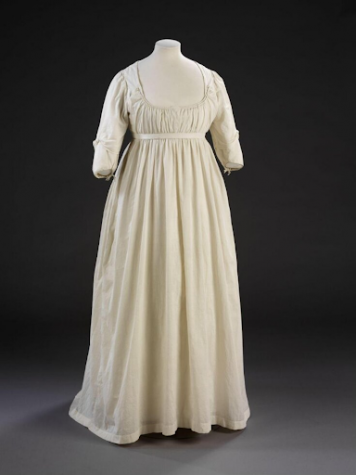
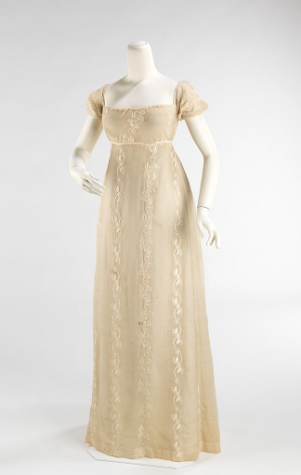
Anya knows I have very high standards for historical and adaptational accuracy. I’m the first to nitpick costumes and hair, and I think the ideal book adaptation would be exactly the same as its source material. Despite its impeccable accuracy, which I normally would admire wholeheartedly, the BBC miniseries fails to capture the excitement and romance of the book. The miniseries may take everything from the source material, but the movie takes advantage of the expanded senses that a viewer uses when watching a movie to show the story unfolding. Each change was made for a reason; the period was changed from 1813, when the book was published, to 1797, for instance, which is when Jane Austen’s first draft of the book was written. The Bennetts all wear pre-regency fashions (extant example on the left) which don’t use the complete empire waistline, but the Bingleys do (extant example on the right). This immediately shows the audience the difference between the two. The softer 1790’s silhouette characterizes the Bennets as being less beholden to or aware of social norms (for better or for worse…). The movie’s creators use the visual medium to exaggerate class divides, which allows the audience to see how desperate the Bennets are. When we can’t hear the thoughts in the characters’ heads, the movie needs to make the Bennetts more poor and messy to differentiate them and let the audience into their world. Although I will admit that the hair in this movie is horrendous, the costumes’ time period change fits the characters incredibly well, despite not being perfect to the book. As much as I am a believer in historical accuracy in adaptations, I am a bigger believer in good costume design that shows viewers characterization and growth.
In adapting a book, it’s important to remember that film is a significantly more sensory experience than reading a book. And by sensory, I don’t mean how some people feel watching Colin Firth take a bath. I mean the auditory and visual aspects of storytelling. I’ve already touched on the costumes as a means of storytelling, but even more stunning are the cinematography and Oscar-nominated soundtrack of the Pride and Prejudice movie.
Right as the movie opens, the music is already setting the scene and establishing the characters. It takes lots of inspiration from Mozart and early Beethoven who would have been composing at the time the movie is set. The music begins with a simple melody, with Elizabeth Bennet walking alone and reading, and it picks up as she nears her home and we see more of her family. This clues our brains in on what this piece of music means — it’s Lizzy when she is “at home,” and feeling her best. At the movie’s beginning, that is when she is with her family, which we understand even more when the camera reveals that the music is diegetic (actually happening in the world of the story). Mary is playing the music, which adds to the music’s connection to the Bennett family, and therefore Lizzy’s at this point in the movie. The music plays when Elizabeth is alone but it gets stronger and more complicated when she is with her sisters, which reflects Lizzy. Elizabeth plays it for Lady Catherine de Bourgh, but it’s stiff and less legato when she is playing, which helps to show how uncomfortable she is. Later in the movie, Georgiana Darcy is playing it in Mr. Darcy’s estate, Pemberley; The book’s narration shows her considering how the mansion might have been hers, but the movie tells us this through music. There is a secondary more pensive motif that plays throughout the movie: it plays after Charlotte tells Elizabeth about her engagement to Mr. Collins and after she talks to Jane about the first ball. It shows us Elizabeth being deep in thought. These themes are just the ones I picked up on watching the movie, and there are certainly more. Most of the time in the movie, music only occurs when there is little dialogue. In a book, there are times the narrator can tell the readers things without using dialogue, but in the movie, there is no narrator, so the music needs to tell the audience what the characters don’t say.
The movie uses masterful visuals to queue its audience in on characters and feelings, without having to use words. There are four main settings in the story: Longbourn (the Bennets’ home), Netherfield (the Bingleys’ home), Rosings (Lady Catherine de Bourgh’s home), and Pemberly (Mr. Darcy’s home). Each estate perfectly reflects the characters that occupy it. Longbourn is earthy and natural, with dark colors and lots of character. It reflects the Bennett family as eclectic and less refined, yet mostly authentic. The darker colors and messiness perfectly oppose Netherfield, which is made up of white and pastel colors. The shots in Netherfield are always symmetrical and calm, whereas shots of the Bennets are generally more lively. The camerawork at Lady Catherine’s estate progresses the calmness of Netherfield to stiffness, and the set is dark and gaudy. It lacks the clean lightness of Netherfield and the coziness of Longbourn.
Most important of all, though, is Pemberley. Mr. Darcy’s house is the place where Elizabeth truly starts to love him, so the plot rests on Pemberly’s magnificence. Pride and Prejudice delivers. The first shot of Pemberly is in this grandiose manor across a lake. We follow Lizzy as she immerses herself in its splendor. The Pemberly scenes were filmed in Chatsworth House, in central England. The house was built in the 1550s and amassed a huge amount of art in its hundreds of years. All this to say that Chatsworth, or Pemberley, has a lot of the same kind of artwork that came off as garnish in Rosings. In Pemberley, though, it looks tasteful and fills the viewer with wonder and awe. Along with all the beautiful art on the walls, Lizzy looks at two statues, one of a veiled woman, and one of Mr. Darcy (You see where this is going, don’t you?). Pemberly is essential in the process of Elizabeth removing the veil of her judgment of Mr. Darcy and looking at his true face.
Aside from brilliant British buildings, a lot of Pride and Prejudice happens outdoors, and many of the shots are simply breathtaking. Pride and Prejudice takes full advantage of the environment, however, and captures the true loveliness of the English countryside. A torrent of rain makes for an intense proposal scene with a torrent of feelings being let out. The clearing morning fog reflects two lovers finally coming together and seeing each other clearly as full people.
I haven’t even mentioned the acting! Kiera Knightley captures Elizabeth Bennett’s playful energy perfectly without making her seem one-dimensional. Matthew Mcfayden embodies Mr. Darcy’s transformation incredibly, and we can see how Darcy’s unpleasantness is sometimes really just awkwardness. He becomes very soft as the performance goes on. The camera captures the contrast between the two characters whenever they are on screen. For instance, in the scene where Mr. Darcy visits Elizabeth at the Collins’ house, the camera is rigid as he walks in and stands uncomfortably. Lizzy, on the other hand, gets up and the camera follows her movement, visually showing the audience the difference between the two. The first time the couple touches – when Mr. Darcy helps Elizabeth into a carriage – the camera lingers on Darcy’s hand as the Bennets leave. In a wonderful moment of narrative symmetry, the same thing happens when Elizabeth leaves Pemberly. My favorite performance in the 2005 movie, however, is Simon Woods as Mr. Bingley. His Bingley is like an adorable golden retriever.
All these factors – the music, the cinematography, the settings, the acting – contribute to what makes this movie the best Pride and Prejudice adaptation. The BBC miniseries may have incredibly accurate costumes and script, but the artistry in the 2005 version is superior. It’s about the vibes. It’s utterly gorgeous and dreamy – it feels like you are the one falling in love. The movie’s masterful construction just possesses your monkey brain emotions until you are convulsing with glee because you can’t take its beauty and romance. If you had a test on Pride and Prejudice tomorrow and didn’t read the book, I’d recommend the 1995 adaptation. If you want to go feral over two people touching hands and impulsively move to England to find love, however… Well, you know my answer.
by Lucy DeMeo ’24, Arts and Entertainment Editor, and Anya Marino ’24, Staff Writer
24ldemeo@montroseschool.org
24amarino@montroseschool.org

